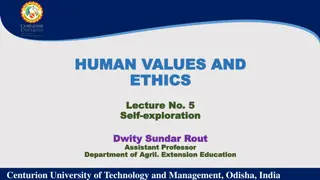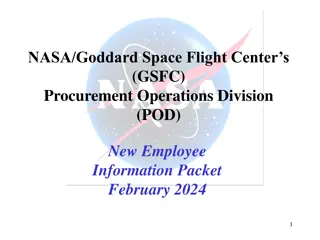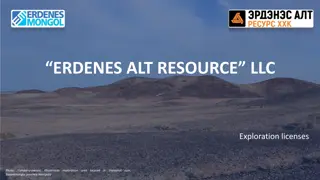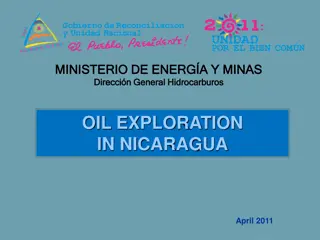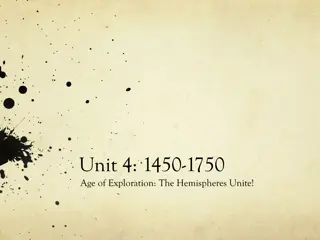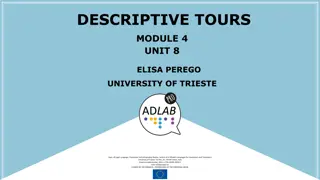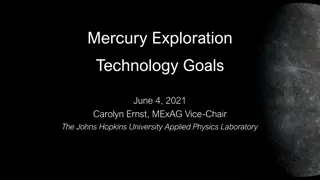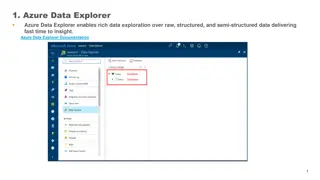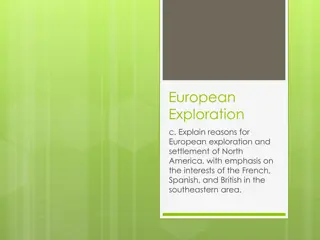Haptic exploration
In this study on haptic exploration, the focus is on hand movements, sensory input, and motor abilities related to perceiving and identifying objects through touch. The research delves into how exploratory procedures influence information gathering and the effectiveness of different hand movements. Various tasks are analyzed to understand the role of sensory input in guiding exploration strategies.
Download Presentation

Please find below an Image/Link to download the presentation.
The content on the website is provided AS IS for your information and personal use only. It may not be sold, licensed, or shared on other websites without obtaining consent from the author.If you encounter any issues during the download, it is possible that the publisher has removed the file from their server.
You are allowed to download the files provided on this website for personal or commercial use, subject to the condition that they are used lawfully. All files are the property of their respective owners.
The content on the website is provided AS IS for your information and personal use only. It may not be sold, licensed, or shared on other websites without obtaining consent from the author.
E N D
Presentation Transcript
Haptic exploration 9.357: Touching and Grasping with Soft Fingers Maddie Cusimano
Lederman & Klatzky (1987), Hand Movements: A Window into Haptic Object Recognition. Lederman & Klatzky (2004), Haptic identification of common objects: Effects of constraining the manual exploration process
Lederman & Klatzky (1987), Hand Movements: A Window into Haptic Object Recognition. Lederman & Klatzky (2004), Haptic identification of common objects: Effects of constraining the manual exploration process
Lederman, Klatzky, & Barber, 1985 Magee & Kennedy, 1980
Haptic subsystems Sensory cutaneous, kinesthetic input Motor active manipulation Key idea: hand s motor abilities are inherent to its sensory abilities J.J. Gibson (1962, 1966): perceptual vs. sensory systems
Haptic subsystems Sensory cutaneous, kinesthetic input Motor active manipulation Key idea: hand s motor abilities are inherent to its sensory abilities J.J. Gibson (1962, 1966): perceptual vs. sensory systems
Hypothesis Hand movements should vary with sensory input and type of information desired Exploratory procedures (EP) Stereotyped movement pattern with certain invariance
2 match-to-sample tasks 1. Varied instructions and videotaped hands during exploration Are EPs driven by the type of information sought? 2. Allowed only 1 EP during exploration How effective is each EP at obtaining different types of information?
2 match-to-sample tasks 1. Varied instructions and videotaped hands during exploration Are EPs driven by the type of information sought? 2. Allowed only 1 EP during exploration How effective is each EP at obtaining different types of information?
Experiment 1: method Mostly unfamiliar objects
Experiment 1: matching accuracy Matching dimension Mean % Agreement Range over sets Overall category mean 88.9 100.0 88.9 100.0 72.2 100.0 44.4 88.9 61.1 100.0 72.2 100.0 66.7 88.9 83.3 100.0 83.3 88.9 Texture Hardness Temperature Weight Volume General shape Exact shape Part motion Function 93.05 94.43 88.73 65.28 80.55 87.48 76.40 93.05 84.70
Experiment 1: EP durations
Experiment 2: method Same match-to-sample task as experiment 1, but participants were instructed to only use a specific motion
Experiment 2: method Necessary: only EP to produce above chance performance Sufficient: EPs that lead to above chance performance on a task Optimal: Greater accuracy than any other EP (if comparable accuracy, look at speed) Specialization: zmax mean(zrest)
Experiment 2: analysis summary Dimension Lateral Motion O S S Pressure Static Contact S Unsupp. Holding Enclose Contour following S S S S S S N 1.92 Texture Hardness Temperature Weight Volume Global Shape Exact Shape Special score S O S S S S S S S S S O S S O O O 2.06 2.79 1.56 1.95 0.62
Lederman & Klatzky (1987), Hand Movements: A Window into Haptic Object Recognition. Lederman & Klatzky (2004), Haptic identification of common objects: Effects of constraining the manual exploration process
Types of constraints 1. Fewer fingers 2. Compliant glove (can bend, skin covered) 3. Rigid finger splint (cannot bend, skin uncovered) 4. Rigid finger sheath (cannot bend, skin covered) 5. Rigid probe
Results: recognition of everyday objects
What about EPs? Constraints: One or two fingers Rigid probe: one or two chopsticks Non-rigid probe: pipe cleaner Clay/styrofoam tips Compliant gloves, bags Duct-taped hands
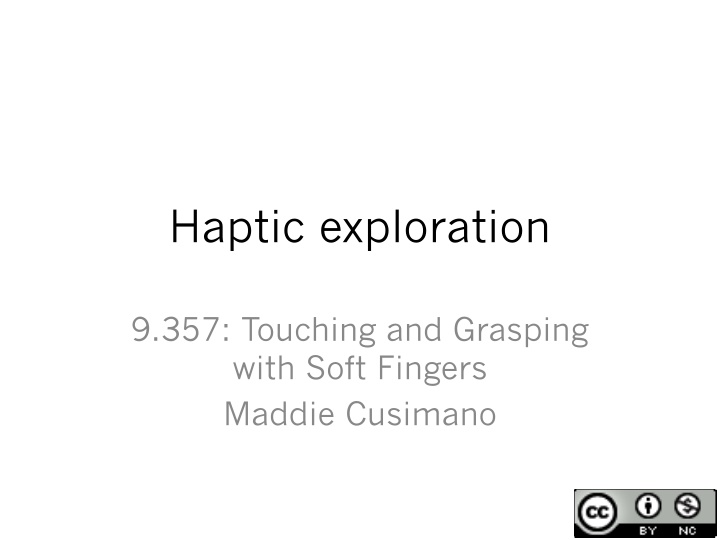


![❤[PDF]⚡ Space Exploration 2007 (Springer Praxis Books)](/thumb/21607/pdf-space-exploration-2007-springer-praxis-books.jpg)
![READ⚡[PDF]✔ Space Exploration 2008 (Springer Praxis Books)](/thumb/21608/read-pdf-space-exploration-2008-springer-praxis-books.jpg)
![❤[READ]❤ Robotic Exploration of the Solar System: Part I: The Golden Age 1957-19](/thumb/21623/read-robotic-exploration-of-the-solar-system-part-i-the-golden-age-1957-19.jpg)





